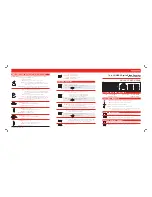
NVR User Manual
3
l
Display of channel status ﴾for example, recording and video loss﴿ on the channel screen.
l
Single‐screen display, multi‐screen display, and multi‐channel tour.
l
Free adjustment of the brightness, contrast, saturation, and tone of preview images.
l
Display of the camera name, time, and date on the screen of each digital channel, and free
adjustment of the positions of the preceding items.
l
VGA output interfaces, providing the surveillance function with monitors.
l
Real‐time display of recording code streams and space occupied per hour.
l
Check of local and remote system logs supported.
Voice function
l
One audio output.
l
Intercom.
l
Synchronous audio and video storage in each channel.
l
Synchronous audio and record playback.
Alarm function
l
One relay alarm output.
l
Pre‐recording against alarms, pre‐storing records collected before an alarm is generated, with
configurable pre‐recording time.
l
Protective circuits for alarm output interfaces, protecting main devices against damage.
Intelligent operation function
l
Operations with a mouse supported.
l
Local amplification of any area on the screen during playback.
l
Copy and paste of the same settings supported on the menu.
1.3 Hardware Environment
l
Power supply
: 12V DC.
l
Cable connection
: Cat 5 network cables and standard AV cables.
l
Temperature
: Keep the operating temperature within the range from 0ºC to 50ºC. The device may
fail when the temperature exceeds the upper or lower limit. Do not install the device above a heat
source.
l
Humidity
: Keep the humidity within the range from 10% to 90%. Do not expose the device to rain
or damp environment. Moisture may damage internal components of the device. Do not install the
device close to a water source.
l
Ventilation
: Install the device in a place with proper ventilation and take dustproof measures.
l
Installation mode
: Install the device horizontally or in a cabinet. Equip the device with a protective
enclosure in outdoor environment.









































